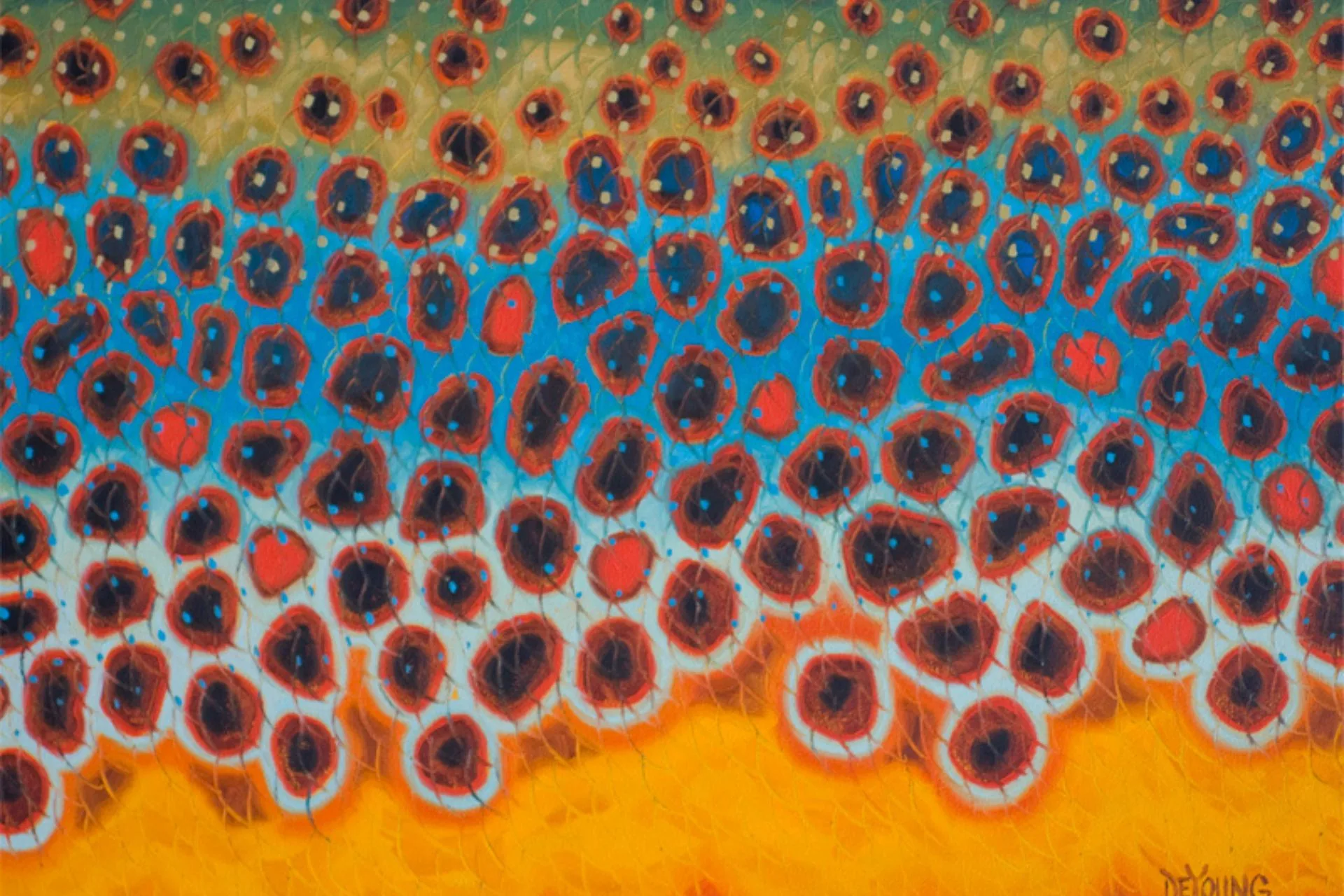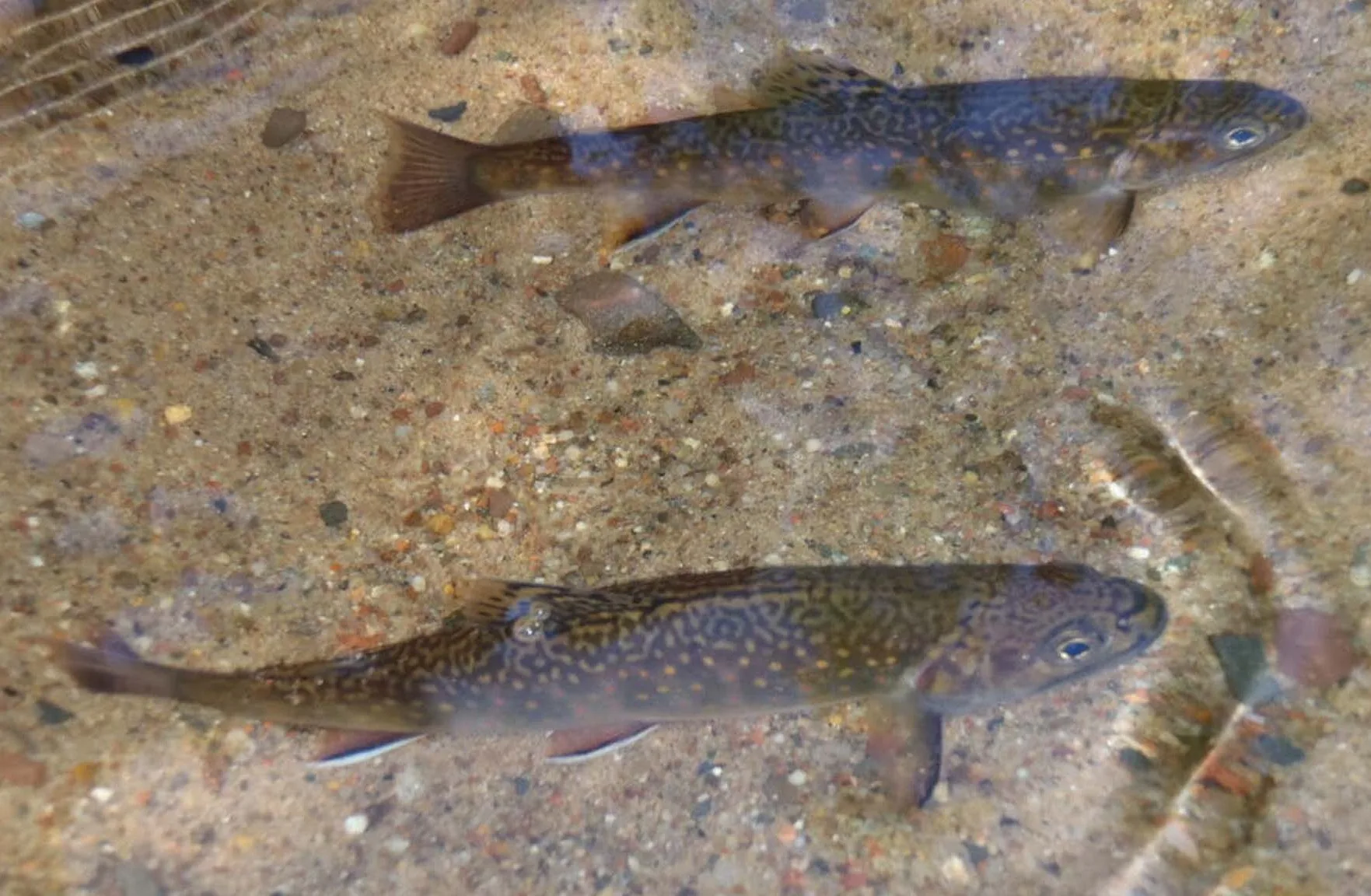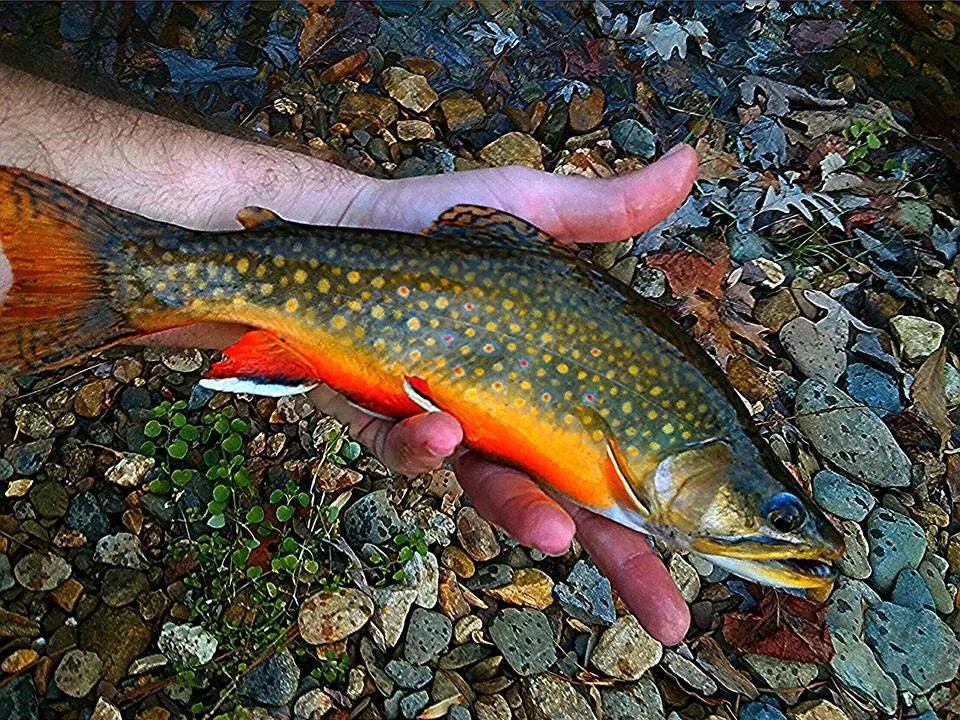Montana Outdoor

Pumpkin Trout
Fall is a wonderful time to go trout fishing. The waters are less crowded. Many sportsmen and women are also on the hunt for big game and other critters. Summer vacation is over, and the weather discourages anglers from going outside in the wind, cold, and snow.
Fall trout become a Pumpkin Portrait! Rainbow trout are also colorful, but they spawn in the Spring. As a result of decades of stocking, there have been over 17 different sub species of rainbow trout stocked in the Madison River, of Montana, alone. You may still see remnants of these past stockings spawning in the Fall as well as other times of the year.
Brook trout are a Char, left over from the Ice Age. Evolutionarily, they are an older species of fish. Brook trout were Native to eastern waters and were transported west to Montana. Many trout introductions involved mules and people packing milk cans of small fish into the backcountry. Railroad crossings allowed fish to be transported and stocked easily.
Brown trout are not Native to North America. These foreign trout were introduced into America at the turn of the century and have become Wild fish. These trout have reproduced in the Fall for eons.
Fall means shorter days. In Montana, we have lost over 90 minutes of daylight since the longest days of June. This change in daylight causes antlers to stop growing, stimulates the Rut, and turns leaves into multiple colors. It also gets trout spawning.
Brown and Brook trout are Fall spawners. Now is when they begin their annual mating rituals. Male trout compete to mate with female trout. They circle, bite, and fight to get the right to help females build Redd’s and mate.

Redd’s are depressions in stream gravels that are made by digging with their tails. Once the depression is built, the male, or male trout snuggle with the female until she releases her eggs. This scent and sight stimulate the males to release their reproductive fluids called Milt. Fertilization happens by luck as the eggs and Milt mingle together and settle into the Redd.
Once the eggs are deposited, the trout cover the Redd with gravel and go on their way. No care or protection happens after this event. The eggs become sac fry and then fry that can swim. They are vulnerable to diseases, predators, weather events, and many other mortal outcomes. Because of these dangers, maybe 3 out of a thousand eggs makes it to become a breeding adult.
To look good, Brown and Brook trout dress up in their finery. The colors become a splendid blend of Pumpkin tints. Red spots become brighter, adipose fins shine red, pectoral fins turn white and the trout look amazing. You must look good to attract a male or have a female trout pick you to mate with.

The browns, yellows, golds, whites, reds, and tans of nature are on full display each Fall. The Brown and Brook trout join in for the colorful parade.
Montana Grant